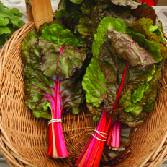-
CATEGORY ::
- All Seeds /
- All Grass Seed /
- All Bluegrass Seed
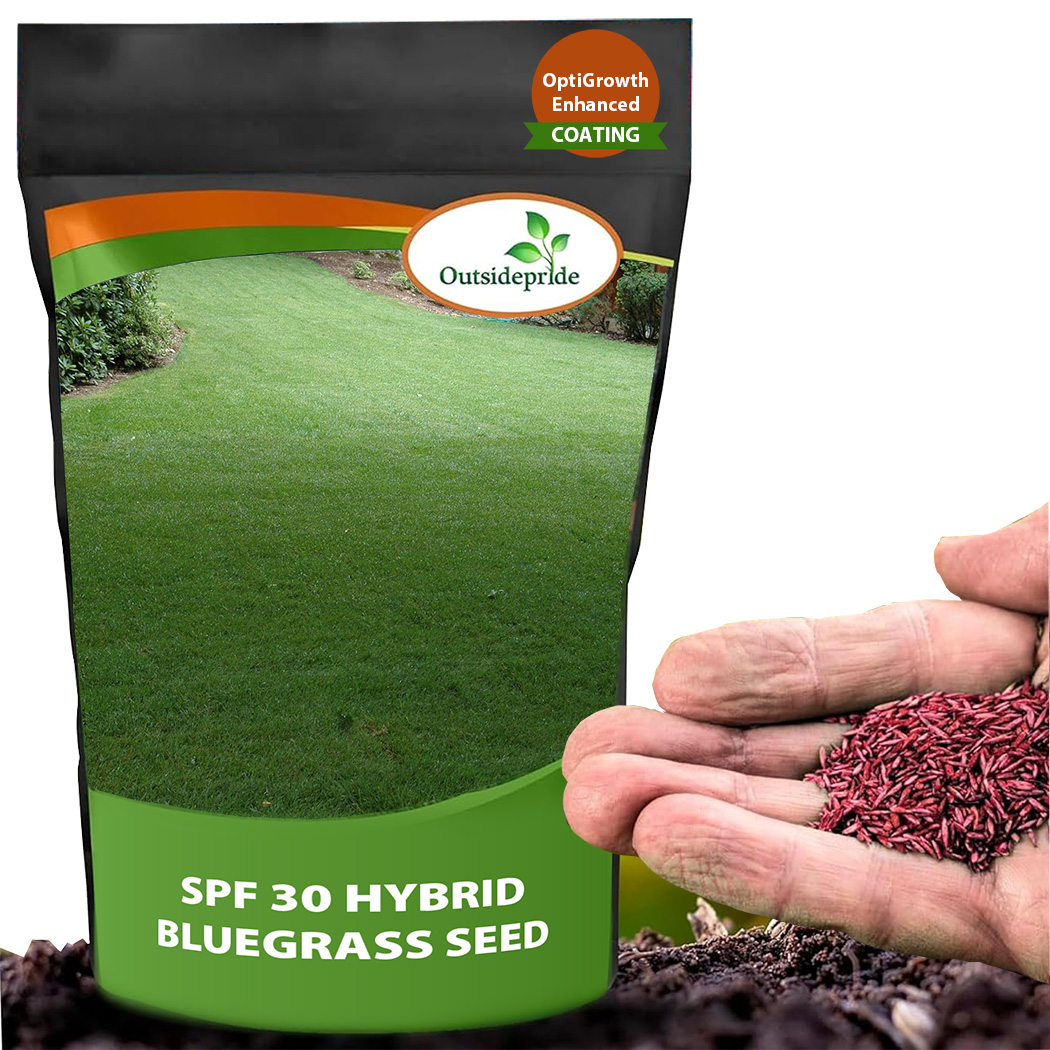

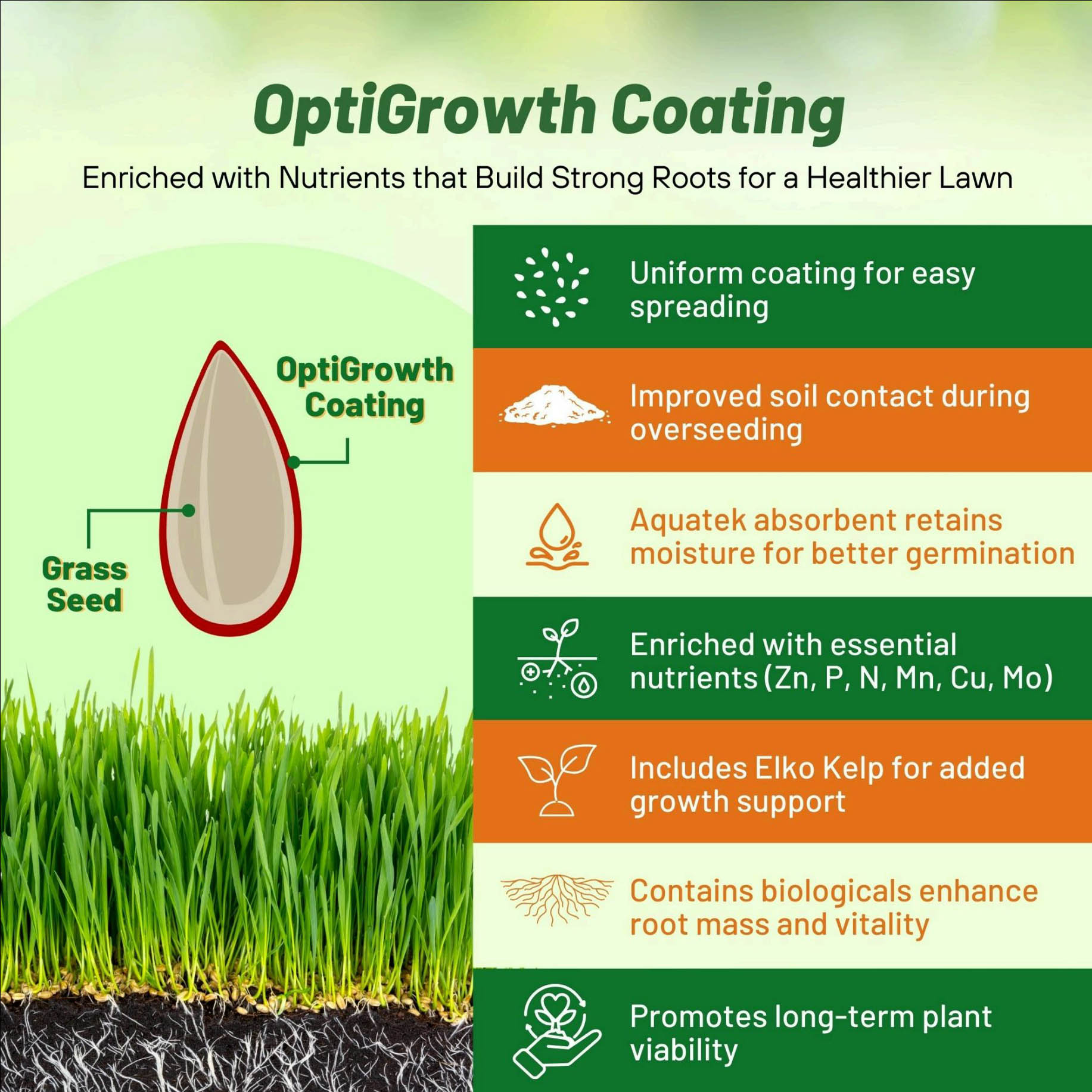
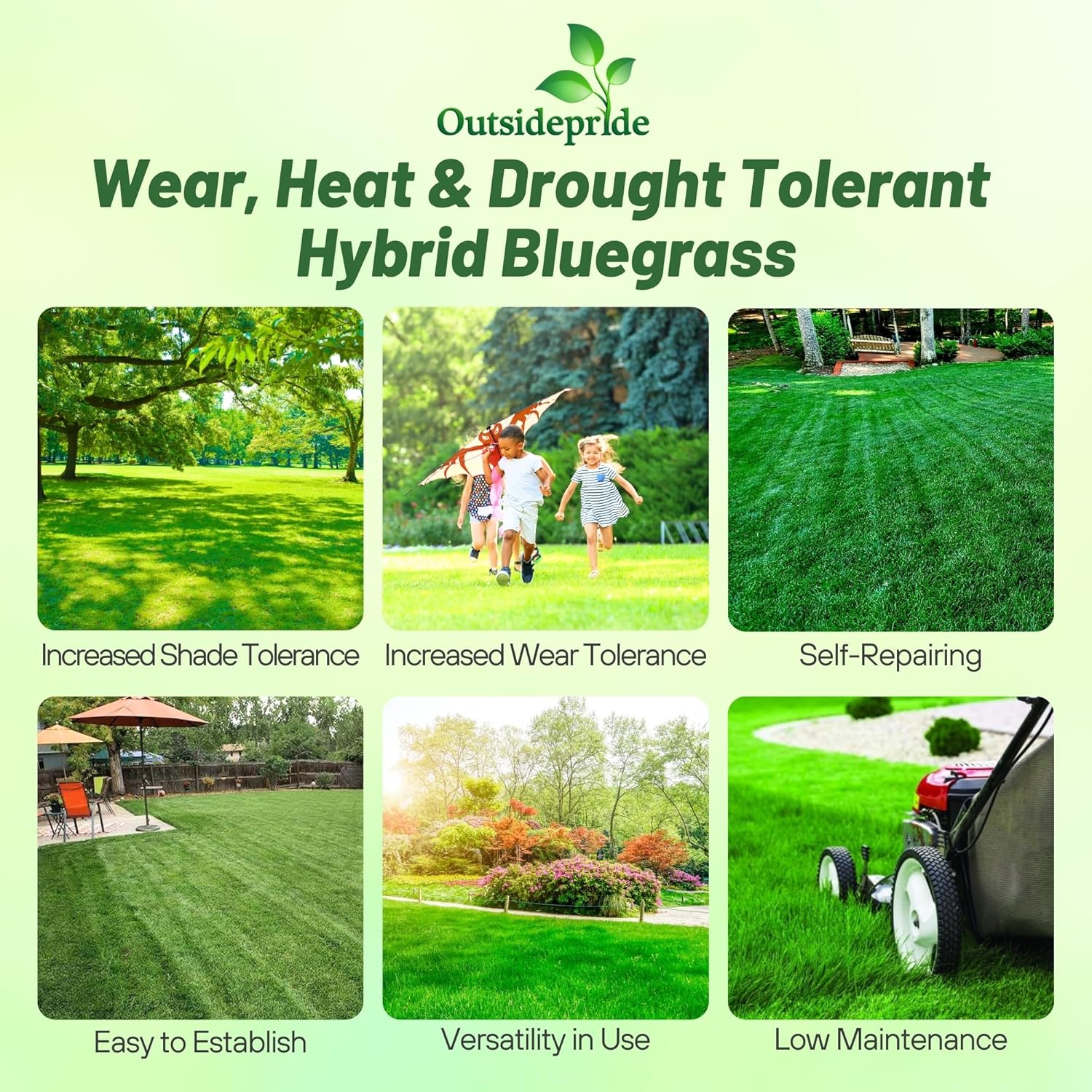
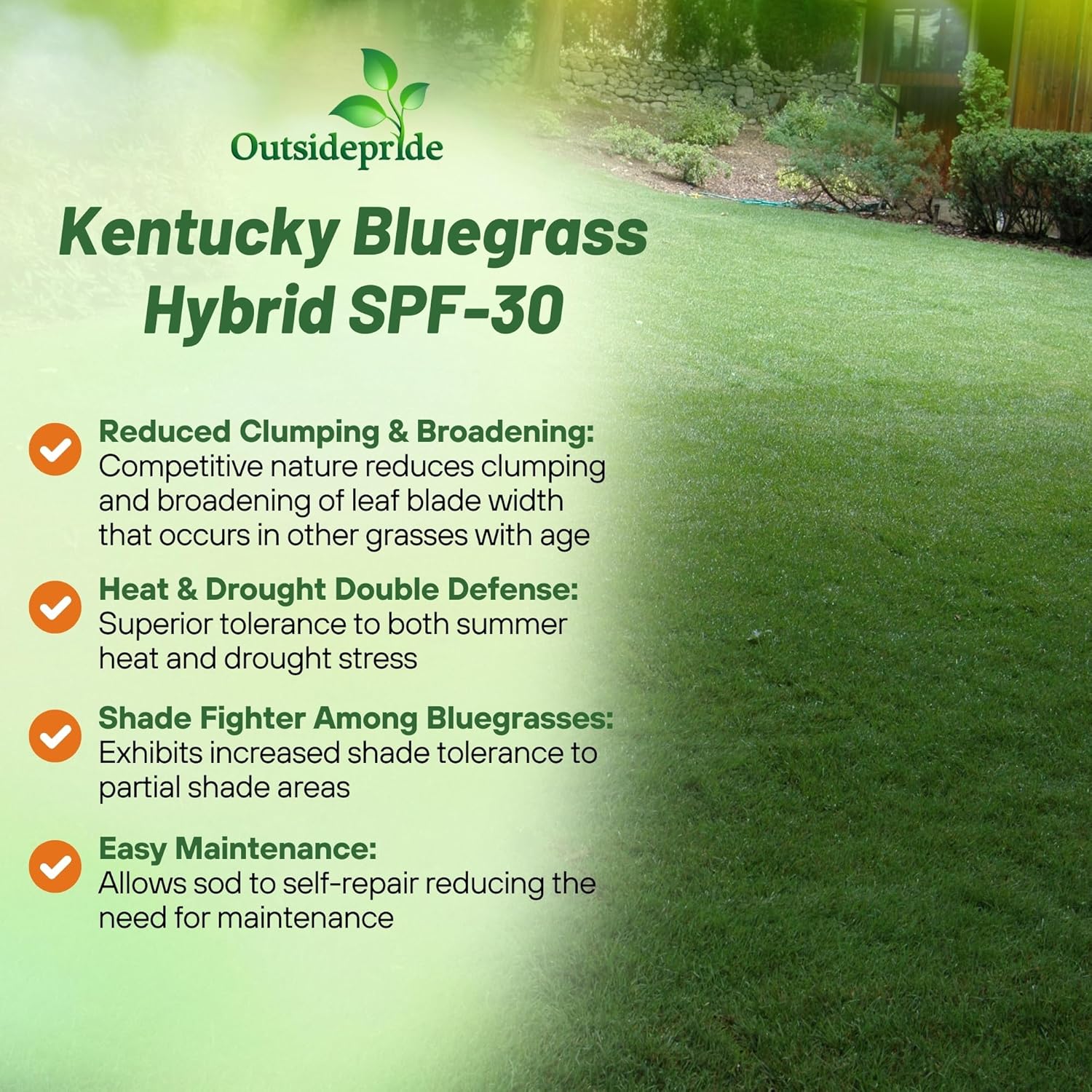
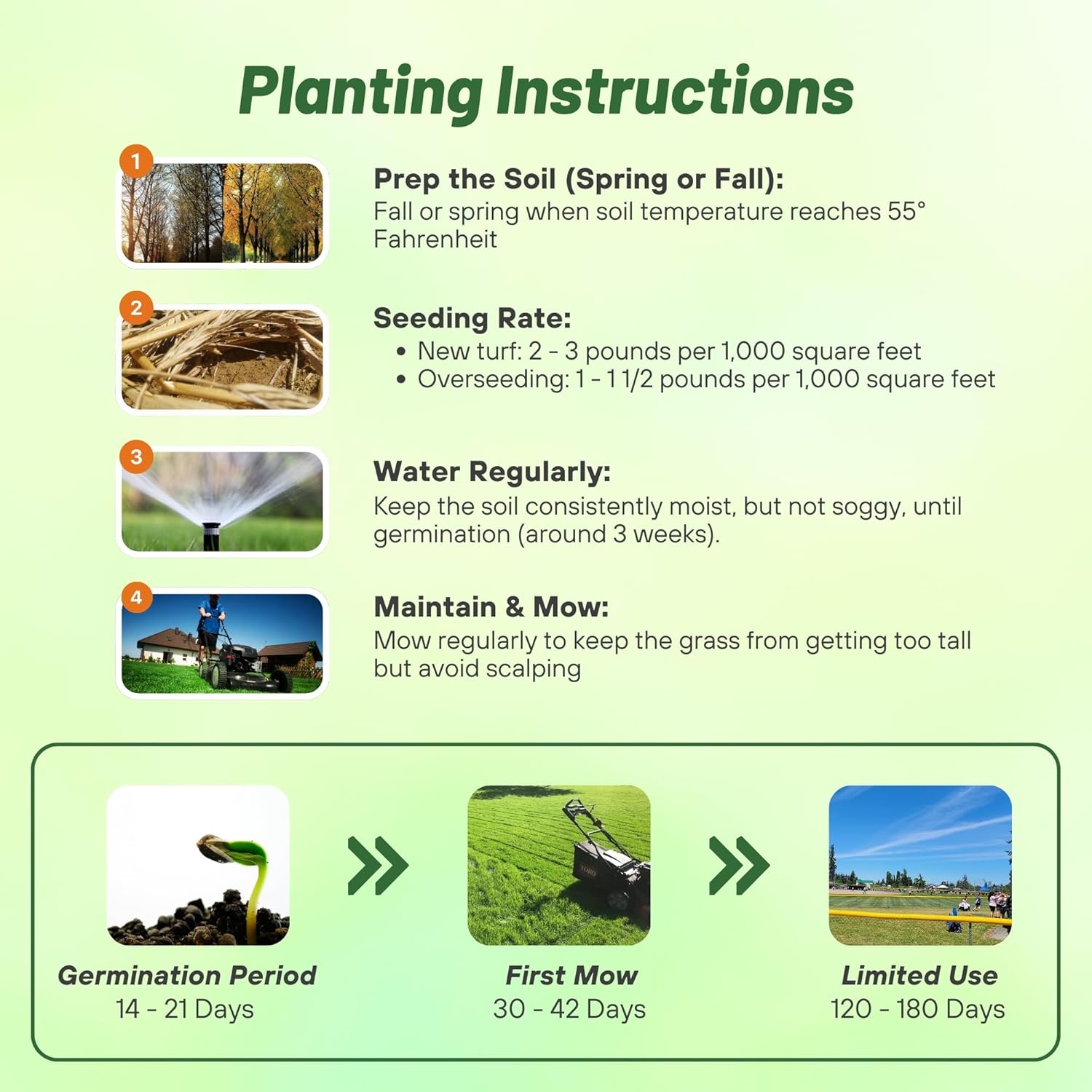
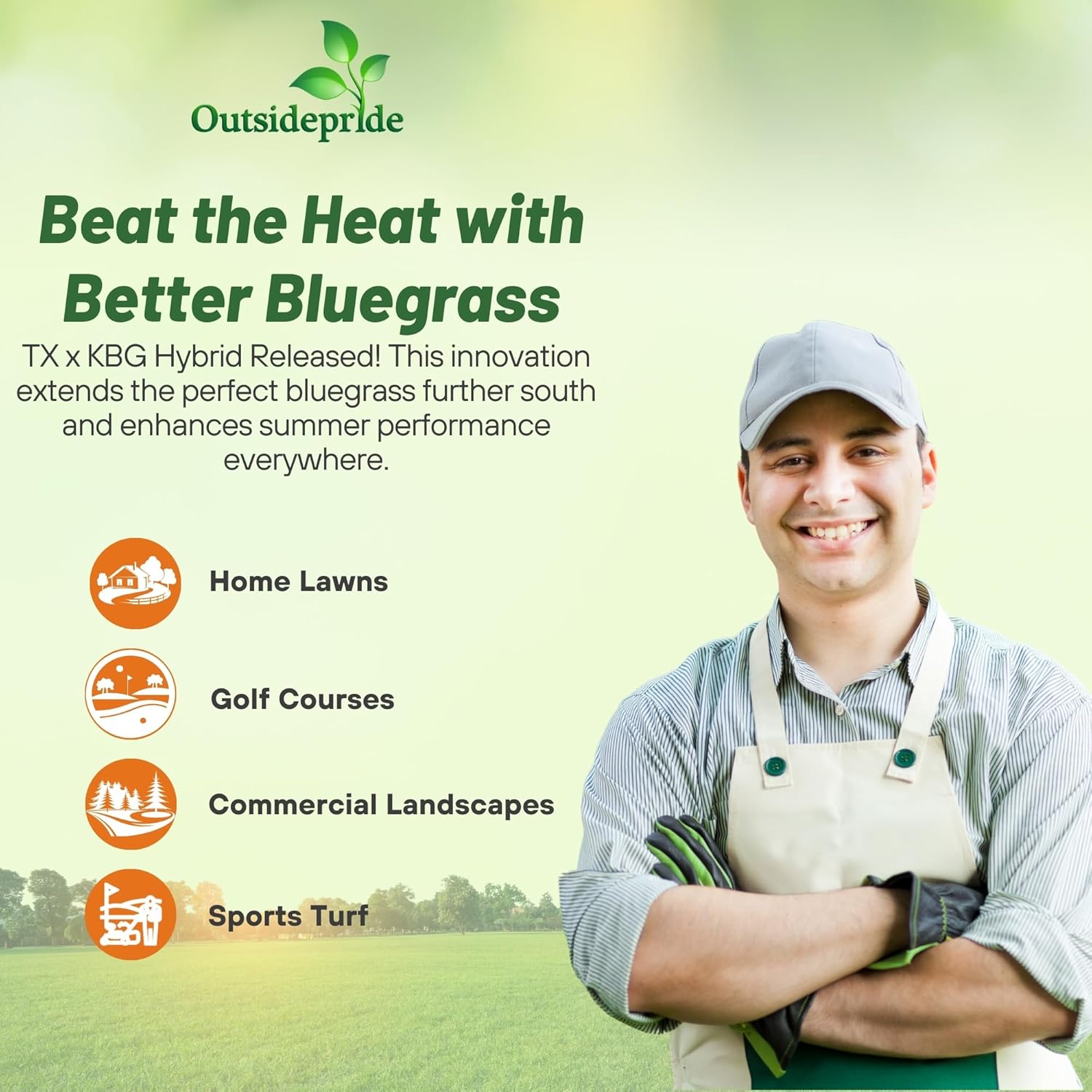
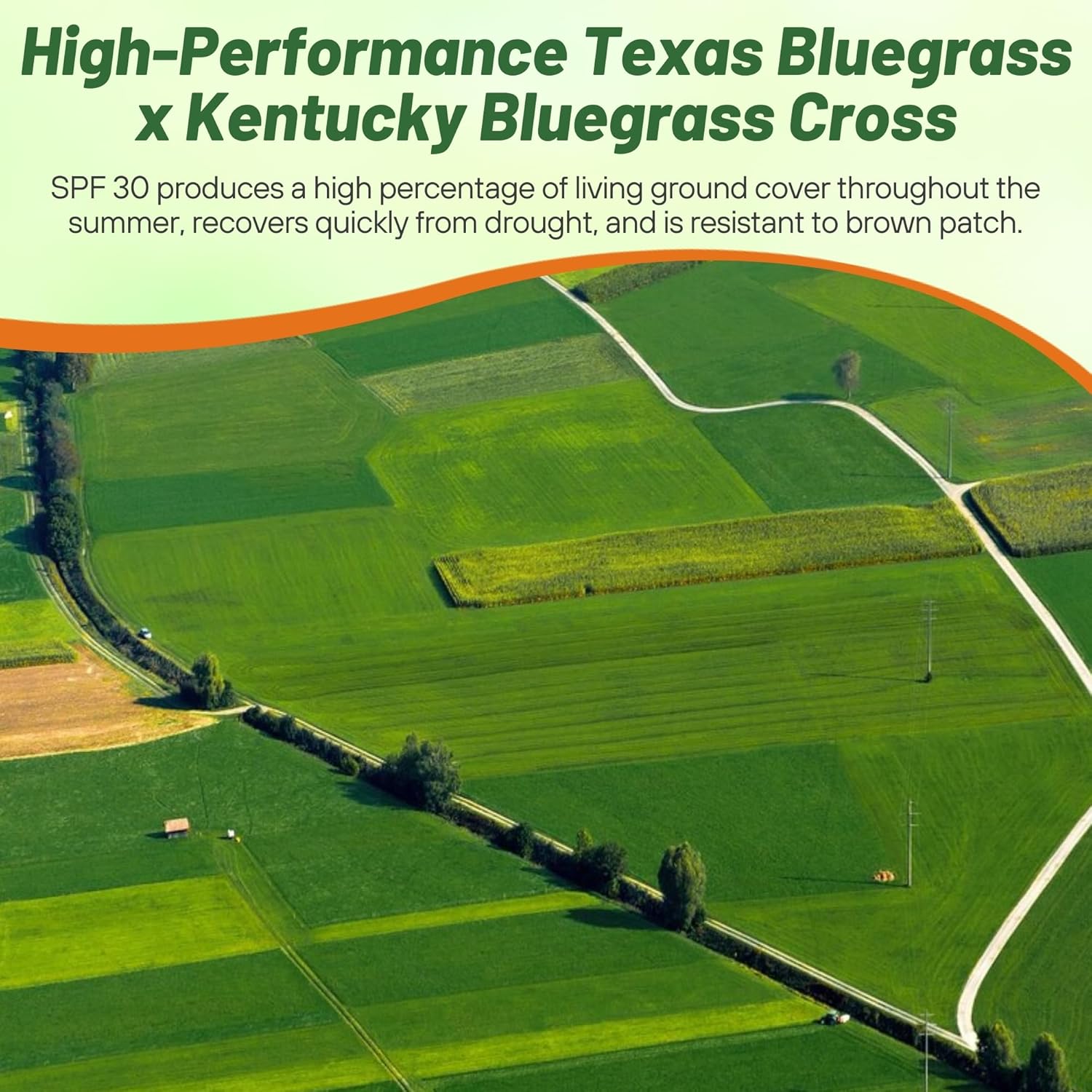
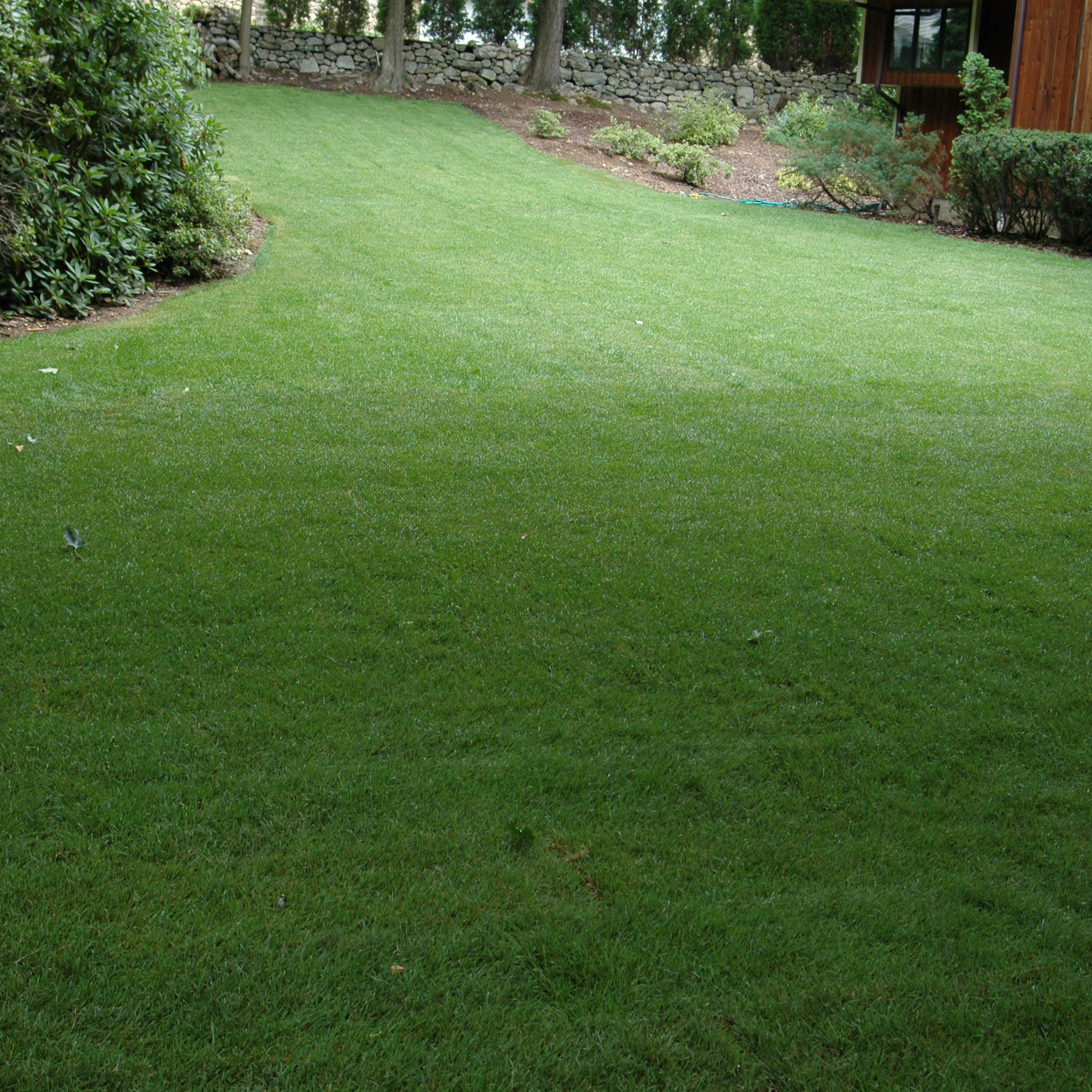
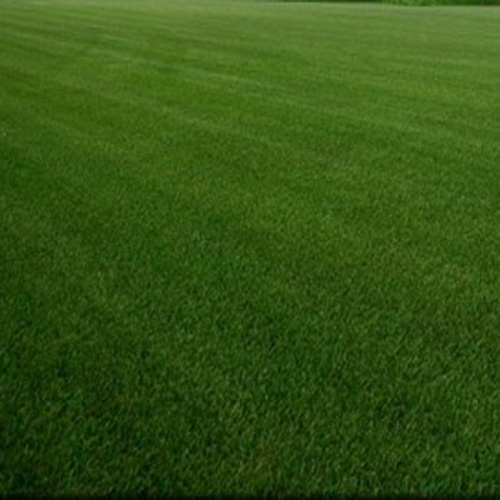
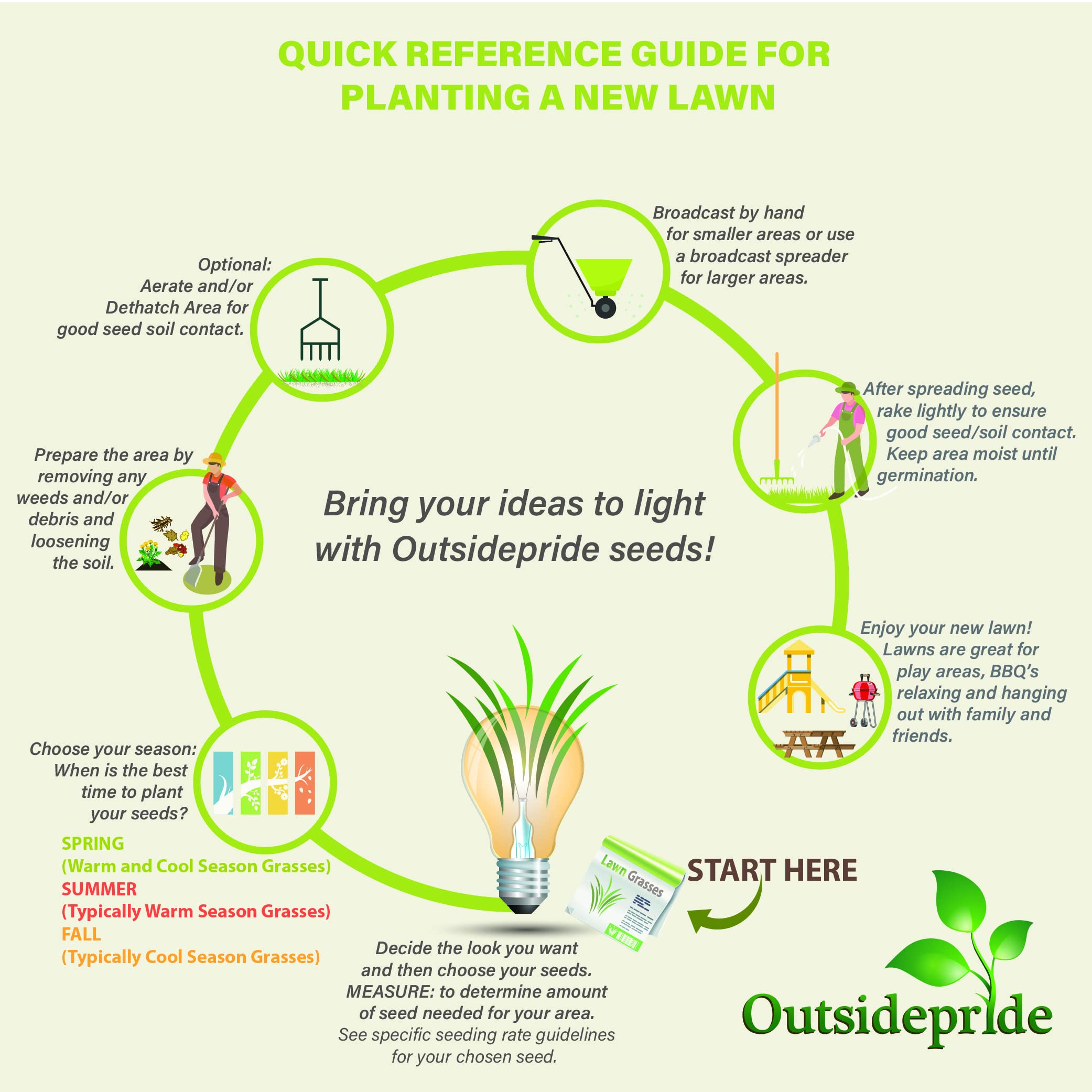
Kentucky Bluegrass - Hybrid SPF-30 w/ OptiGrowth
About...
SPF 30 Heat Tolerant Hybrid Bluegrass - Now Professional Turf managers can add genetic diversity with a high-performance cool season grass cross between Texas Bluegrass x Kentucky Bluegrass! Expanding the area of adaptation for bluegrasses, TX x KBG types have been successful farther south than traditional Kentucky bluegrasses, and are adding heat & drought tolerance and summer performance to northern zone turf. Can be used in full sun or partial shade in USDA zones 4 - 10.
MORE BLUEGRASS OPTIONS
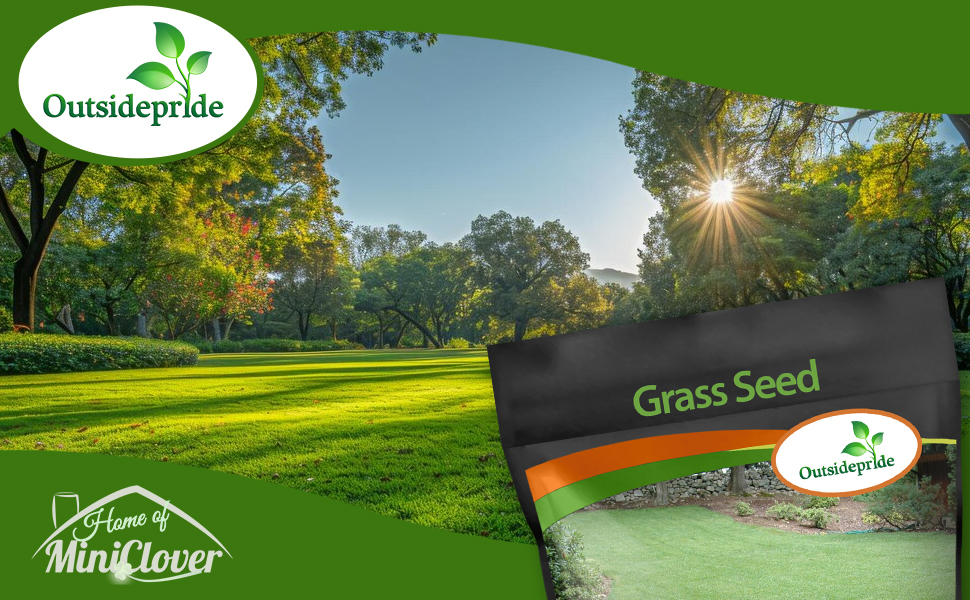
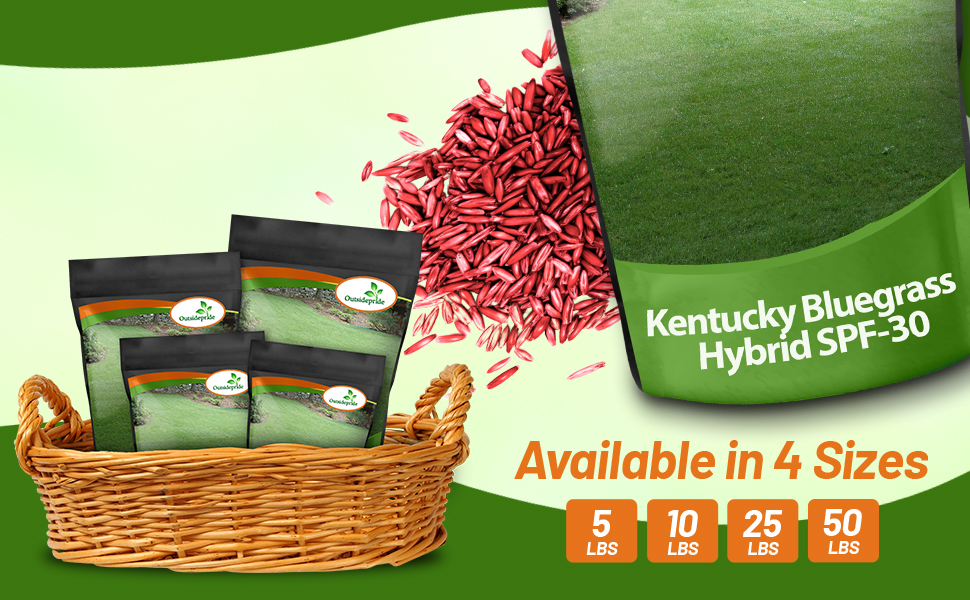
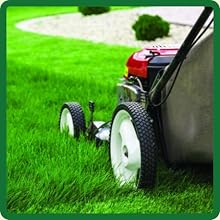
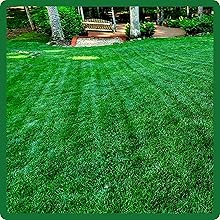
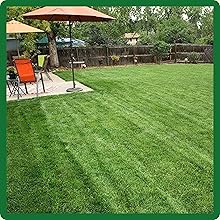
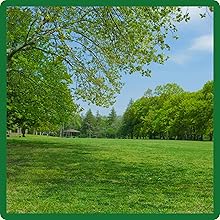

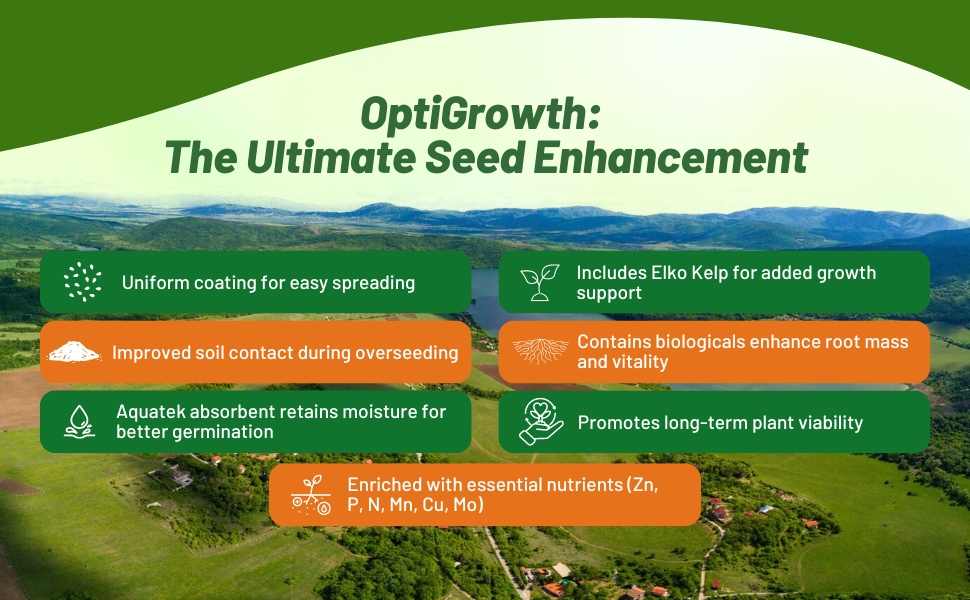
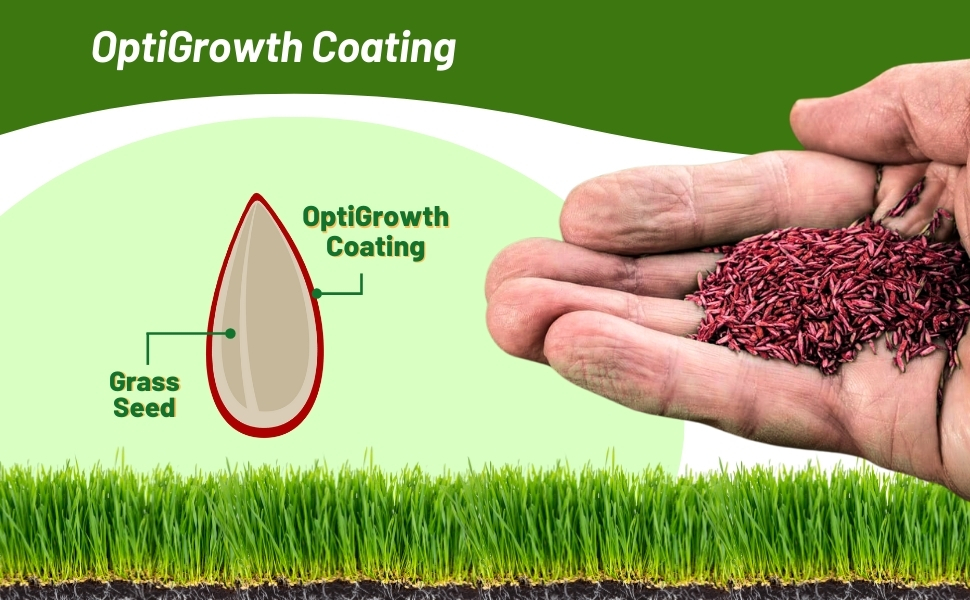
SPF 30 Heat Tolerant Hybrid Bluegrass - Now Professional Turf managers can add genetic diversity with a high-performance Texas Bluegrass x Kentucky Bluegrass cross! Expanding the area of adaptation for bluegrasses, TX x KBG types have been successful farther south than traditional Kentucky bluegrasses, and are adding heat tolerance and summer performance to northern zone turf. SPF 30 produces a high percentage of living ground cover throughout the summer, recovers quickly from drought, and is resistant to brown patch. With its aggressive rhizomes, SPF 30 improves the ability of tall fescue turf to recover when combined in a mixture. SPF 30 is an elite and medium-bladed bluegrass for landscape contractors, sports turf managers, and golf course superintendents who are battling the stress of summer heat. SPF 30 (HB 128) is a sister to HB 129 TX x KBG.
Use SPF 30 hybrid bluegrass in Sod, Sports, Golf Roughs and Lawns, Use SPF 30 in blends with other bluegrasses, with perennial ryegrass, and in multi-species mixes at the rate of 10%-35% by weight to increase density, durability, and genetic diversity. Added to turf type tall fescue at the rate of 5-15%, SPF-30 will increase density, provide brown patch performance, and aid in drought stress recovery. SPF-30 has also demonstrated persistence in partial shade areas in warm-season regions where low light condition are not suitable for Bermudagrass.
Hybrid bluegrasses germinate from seed slightly faster than Kentucky bluegrass, but the differences in overall establishment rate have not been significant. Hybrid bluegrass germinates and establishes slower than tall fescue. Hybrid bluegrass survive prolonged heat and drought periods. Another noteworthy feature is the disease tolerance of hybrid bluegrass. SPF 30 has shown increased tolerance to many diseases compared to regular Kentucky bluegrass including Rhizoctonia blight.
Not only does SPF 30 stand up to moderate summer temperatures extremely well, it shows outstanding shade hardiness. Hybrid bluegrasses possess a strong creeping growth habit due to rhizomes (underground stems). This creeping growth potential is something that most tall fescues do not possess. This should further improve turf density and provide for recuperative potential if a turf stand is damaged.
With the combination of heat and drought tolerance, shade tolerance, quick establishment, and excellent disease resistance, this grass is one of the best on the market.
SPF 30 Grass Characteristics:
- Increased shade tolerance
- Increased wear tolerance
- Allows sod to self-repair
- Competitive nature reduces clumping and broadening of leaf blade width that occurs in other grasses with age
- Ideal partner in mixes with turf type fescue
- Aggressive growth habit
- Optimum mowing height of 2 - 5 inches
Planting Guide
SOWING TEMPERATURE
55F+
WHEN TO PLANT
Spring 55F or up to 8 weeks before first frost
AVERAGE GERM TIME
5 - 28 days
DAYS TO FIRST MOWING
28 - 35 days
PLANTING DEPTH
Surface to 1/8 Inch
SOWING METHOD
Broadcast or Drill
MOWING HEIGHT
2.5 - 3 Inches
ENVIRONMENT
Full Sun
ZONES
3 - 9
Grass Specifications
IDEAL FOR
Lawns, Golf Courses
PLANT CHARACTERISTICS
Fine to Medium Bladed, Dark Green
ESTABLISHMENT RATE
Slow
MOISTURE REQUIREMENTS
Moderate to Hiigh
ACIDIC SOIL TOLERANCE
Medium
SALINITY TOLERANCE
Moderate
COLD TOLERANCE
High
SHADE TOLERANCE
Poor
WEAR TOLERANCE
Medium to High
THATCH TENDENCY
Medium
FERTILIZER NEEDS
Medium
SEASON
Perennial
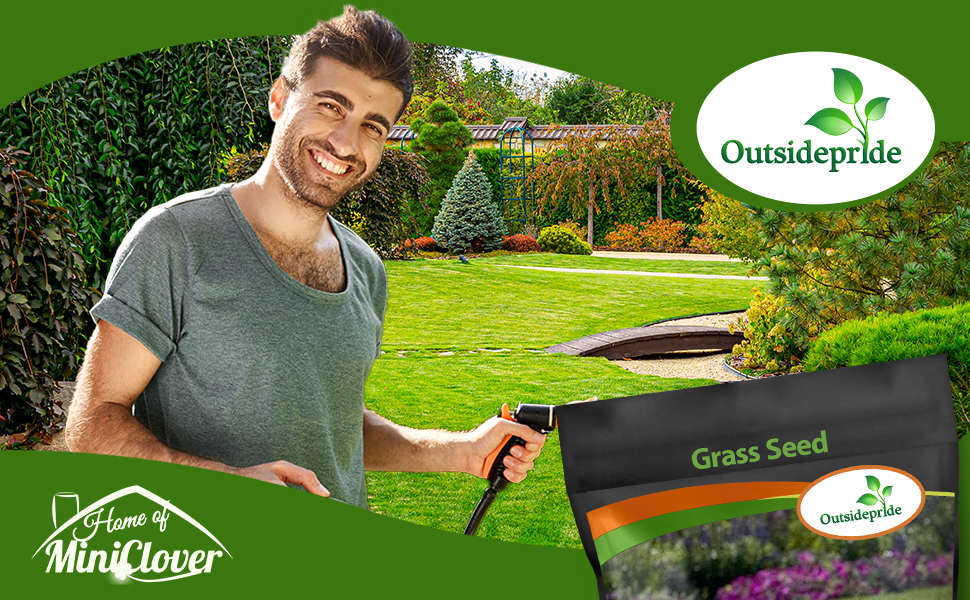
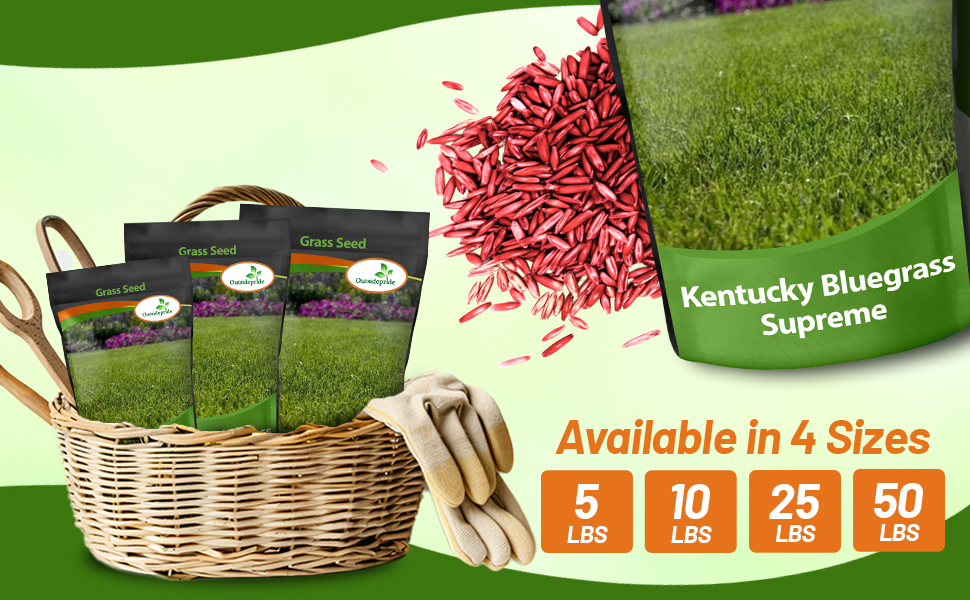
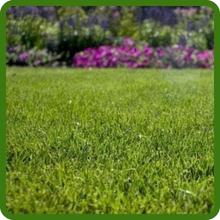

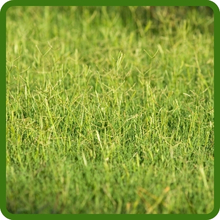
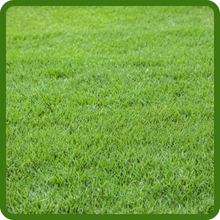
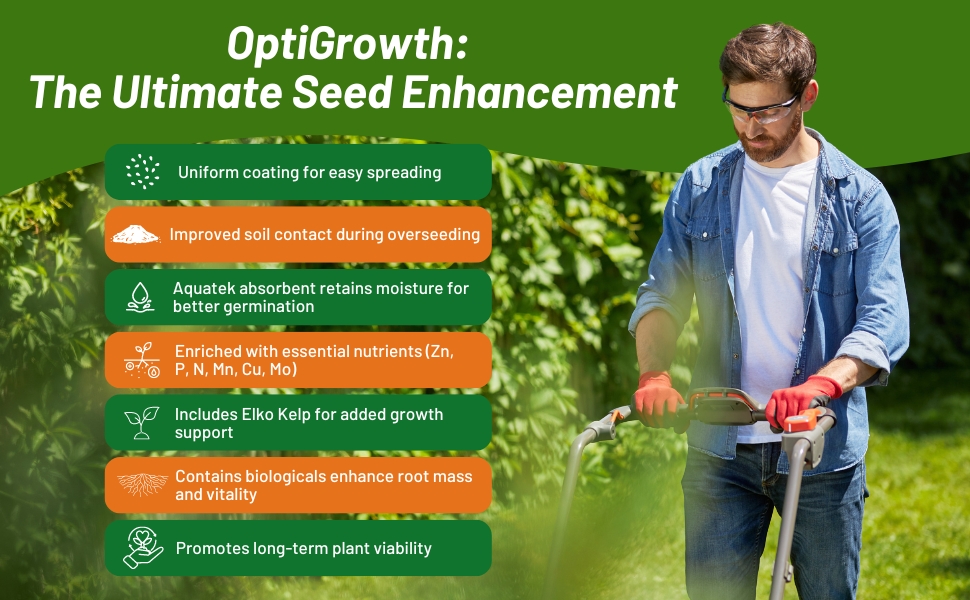
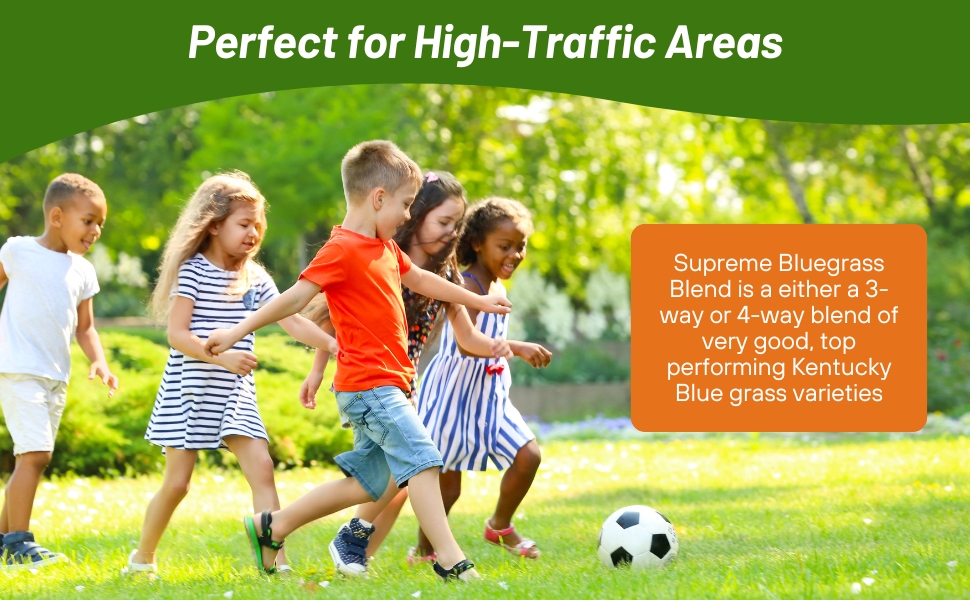
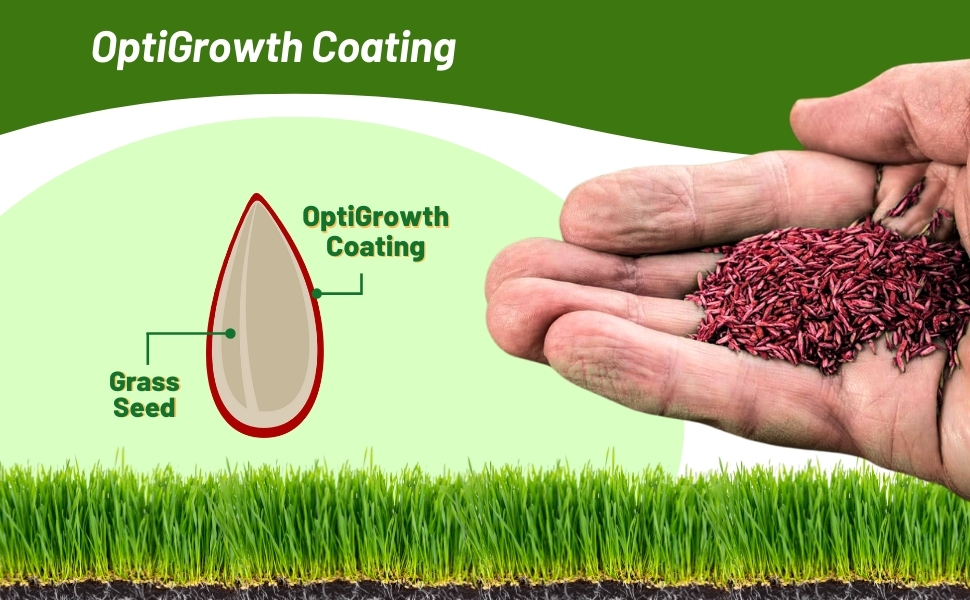
The varieties that are selected for this blend are chosen for their excellent color, quick establishment, resistance to disease, and their ability to perform under a broad range of weather and soil conditions. Kentucky Blue Grass lawns are known for their fine to medium texture, uniformity of color, and density and durability for traffic. Kentucky Bluegrass has the ability to repair with rhizomes that spread and fill thin, worn areas. Because of this, KGB is excellent for the backyard lawn where children and pets play or on the ballpark field. Kentucky Bluegrass lawn seed typically emerges in 14 - 21 days. First mowing is typically three weeks after emergence.
Planting Guide
SOWING TEMPERATURE
55F+
WHEN TO PLANT
Spring 55F or up to 8 weeks before first frost
AVERAGE GERM TIME
12 - 35 days
DAYS TO FIRST MOWING
28 - 35 days
PLANTING DEPTH
Surface to 1/8 Inch
SOWING METHOD
Broadcast or Drill
MOWING HEIGHT
2.5 - 3 Inches
ENVIRONMENT
Full Sun
ZONES
3 - 9
Grass Specifications
IDEAL FOR
Lawns, Golf Courses
PLANT CHARACTERISTICS
Fine to Medium Bladed, Dark Green
ESTABLISHMENT RATE
Slow
MOISTURE REQUIREMENTS
Moderate to High
ACIDIC SOIL TOLERANCE
Medium
SALINITY TOLERANCE
Moderate
COLD TOLERANCE
High
SHADE TOLERANCE
Poor
WEAR TOLERANCE
Medium to High
THATCH TENDANCY
Medium
FERTILITY NEEDS
Medium
SEASON
Perennial
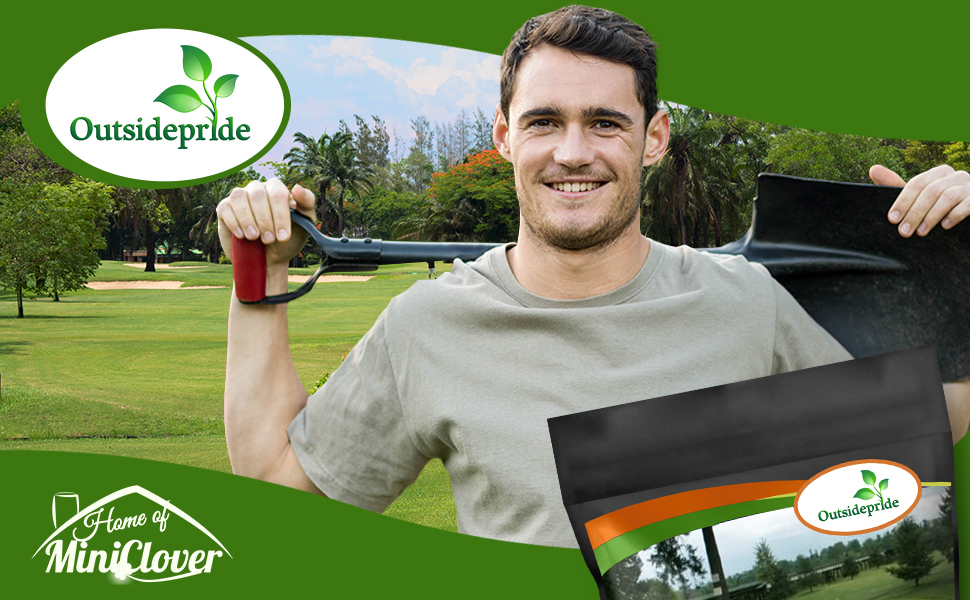

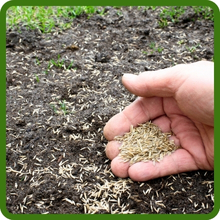
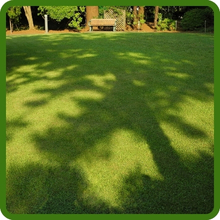

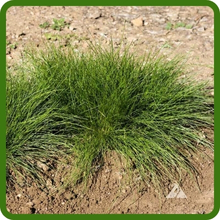
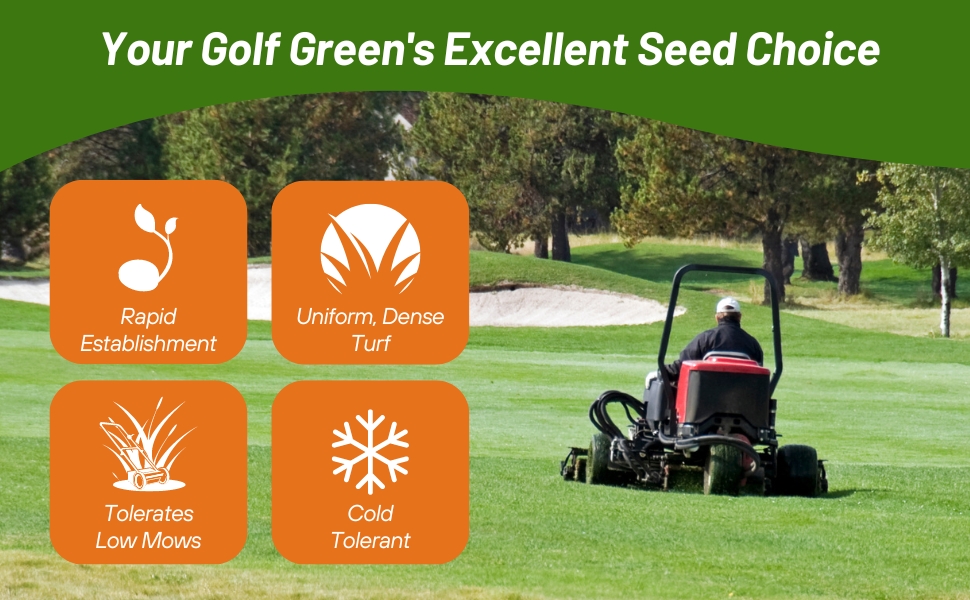

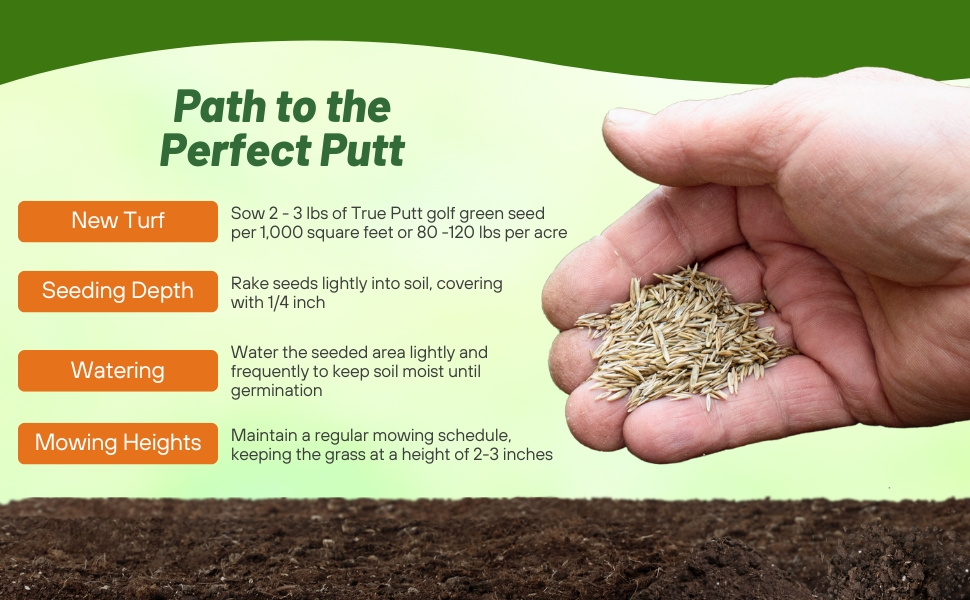
True Putt is an excellent new perennial bluegrass that is medium green depending on fertility and forms a uniform, dense turf at greens height. This creeping bluegrass is medium to fine textured and forms an extremely dense putting green grass surface. True Putt helps crowd out Poa annua better than creeping bentgrass. This Bluegrass seed germinates rapidly in 5 to 7 days under optimum conditions especially when kept continually moist. It is very vigorous and mixes well with creeping bent grass in a 50/50 mixture. True Putt is a great grass seed choice for the home golf green.
True-putt is drought and shade tolerant and recovers well after water stress events. Tolerates close mowing to 1/8 inch (optimum mowing height on greens is 5/32), but will also perform well at 1/2 inch mowing height. Creeping bluegrass is a deep rooted grass which has exhibited some field resistance to pink snowmold. This putting green grass is well adapted to the cool, moist climate especially in the northern half of the United States.
True-Putt will soon be one of the leading putting green grass varieties on the market. A creeping bluegrass putting green has excellent density, shade tolerance, heat tolerance, wear tolerance, and cold tolerance. True Putt golf grass establishes quickly from grass seed, and it produces a thick turf competing with the grassy weed Poa annua. For those of you who want to build your own putting green, True Putt is a great choice for putting green seed.
Click Here for a True Putt Fact Sheet (PDF)
Seeding Rate & Planting Time
- New turf: Sow 2 - 3 pounds of True Putt golf green seed per 1,000 square feet or 80 -120 lbs per acre
- Plant True Putt Creeping Bluegrass seed when soil temperature reaches 55 degrees in spring up until a minimum of 8 weeks before frost in fall
Planting Guide
SOWING TEMPERATURE
55F+
WHEN TO PLANT
Spring 55F or up to 8 weeks before first frost
AVERAGE GERM TIME
5 - 28 days
DAYS TO FIRST MOWING
28 - 35 days
PLANTING DEPTH
1/8 - 1/4 Inch
SOWING METHOD
Broadcast or Drill
MOWING HEIGHT
1/4 to 1/2 Inch
ENVIRONMENT
Full Sun to Partial Shade
ZONES
3 - 9
Grass Specifications
IDEAL FOR
Lawns, Golf Courses
PLANT CHARACTERISTICS
Fine to Medium Bladed, Dark Green
ESTABLISHMENT RATE
Slow
MOISTURE REQUIREMENTS
Moderate to Hiigh
ACIDIC SOIL TOLERANCE
Medium
SALINITY TOLERANCE
Moderate
COLD TOLERANCE
High
SHADE TOLERANCE
Poor
WEAR TOLERANCE
Medium to High
THATCH TENDENCY
Medium
FERTILIZER NEEDS
Medium
SEASON
Perennial
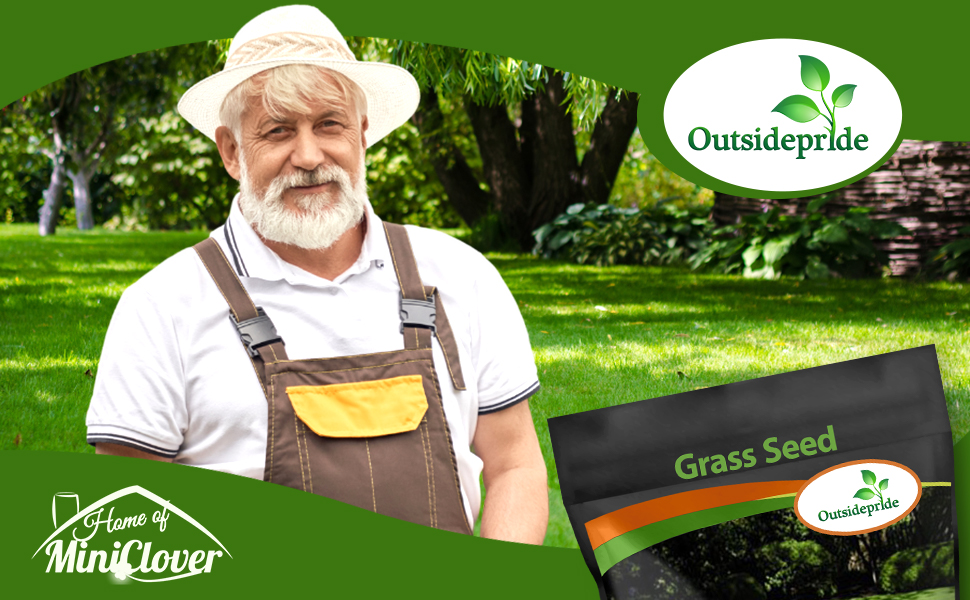
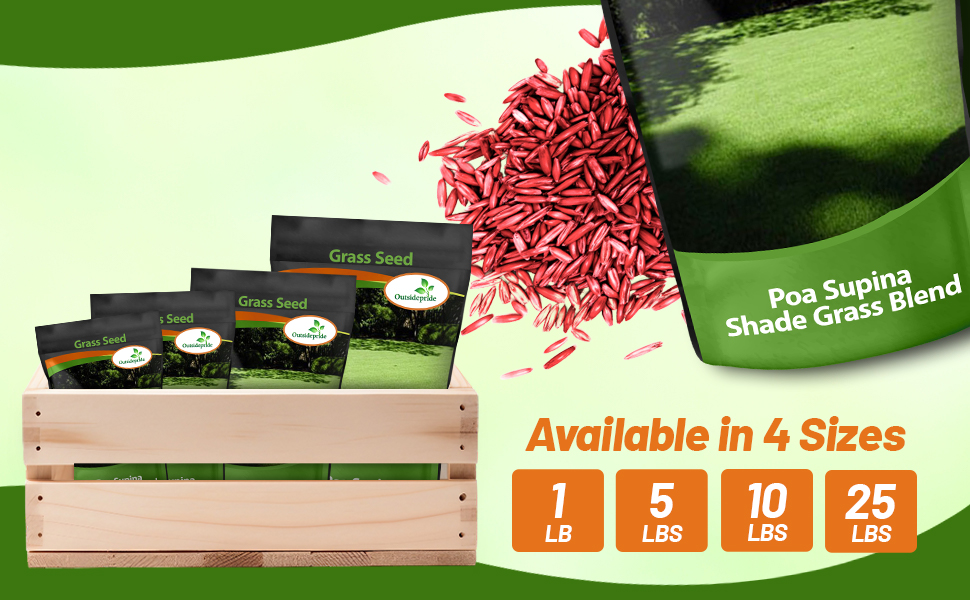
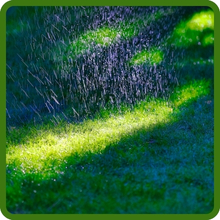
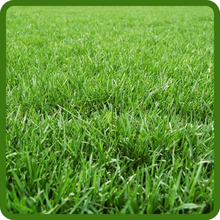


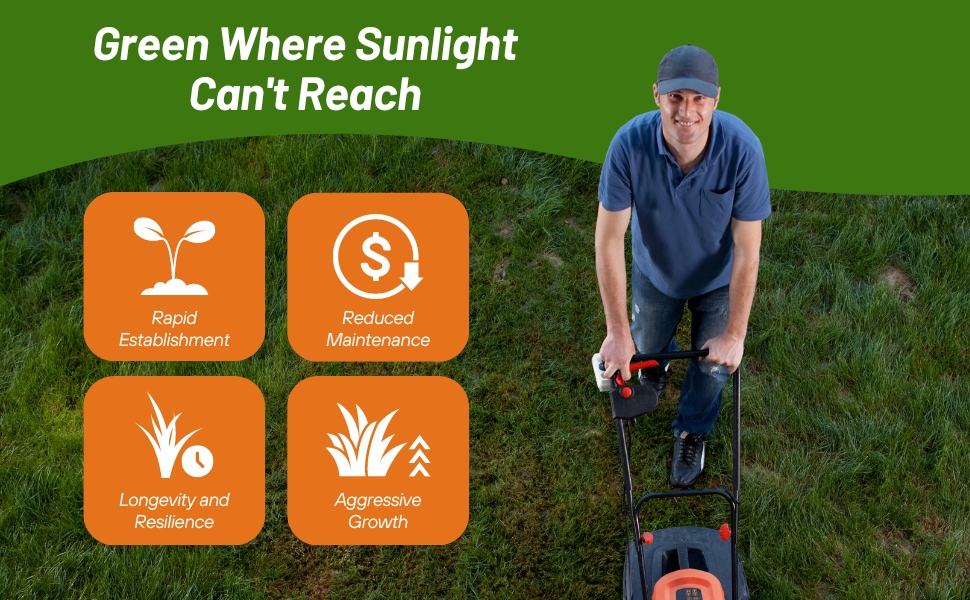

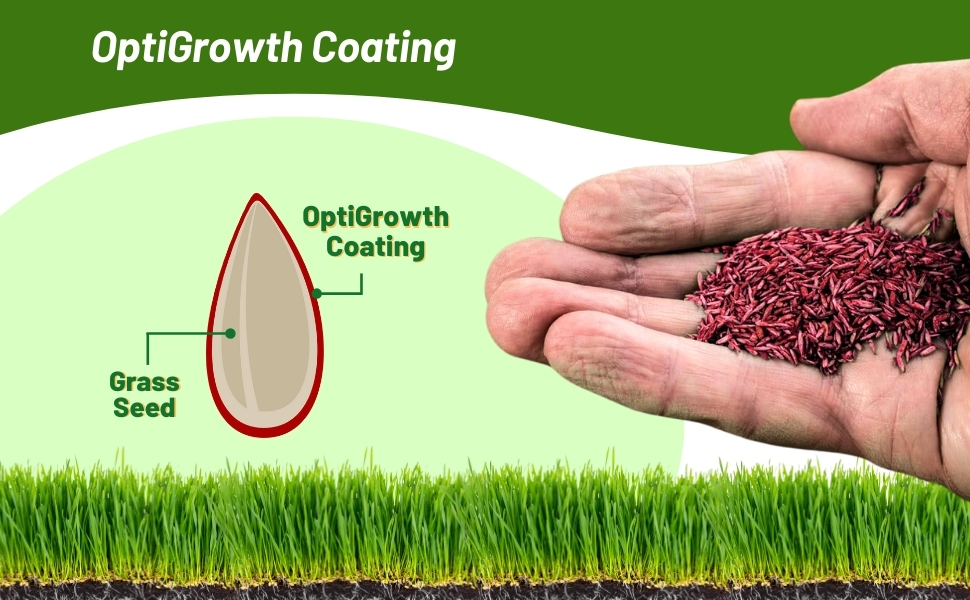
Supranova Poa Supina is the elite shade grass for dense shade in cool season areas. This is the best primo shade lawn grass on market today. It is specially designed for deep shade and little water although it has been used for golf courses, lawns, and athletic field turf for over twenty years. Supranova shade grass has been developed over the last 20 years and the breeding keeps improving.
No other species outperforms this variety in the shade. It grows where no grass has grown before. It’s wear tolerance and aggressive growth make it ideal high maintenance and high wear areas. Today Supranova Poa supina shade grass seed produces the most shade tolerant, wear resistant, cool season grass on the market.
Poa Supina is well adapted to cold temperatures and is found commonly in the sub-alpine regions of the German and Austrian Alps. In Germany, the common name is Lägerrispe, which means, "where the cows lay". The name is a reflection of the ability of Poa supina to persist and even thrive on cattle trails, even in shaded woodland areas. Another attractive asset is the apparent resistance of Poa supina to many diseases which results in fewer fungicide applications. Unfortunately, the cost of grass seed for shade is quite high; therefore, the practicality of seeding mono-stands of the grass is often economically unfeasible. Evidence from Germany suggests relatively low rates (e.g., less than 10%) of Poa supina seed can be mixed with other cool season grasses and after several years of heavy traffic the stand will be predominantly Poa supina, providing superior coverage compared to stands without Poa supina.
We have gone the extra mile to include 25% of Poa supina in our shade grass mix so you get faster results and better performance. We mix it with Poa Trivialis which is also very shade tolerant. CPoa Trivialis thrives when cool, moist conditions prevail which is your typical Northern Climate shade. Poa Trivialis seed produces a fine-textured turf grass and develops a high shoot density under cool, moist conditions. It is capable of withstanding a considerable amount of shade. It is one of the most winter hardy turf grasses with very good low temperature tolerance. When you combine Creeping Fescue and Poa supina into one mix, you get the absolute best grass seed for shade for cooler climates at an economical price.
This mixture approximately contains the following:
- 25% Supranova Poa Supina Bluegrass
- 75% Poa Trivialis
Characteristics
- Germination: This shade grass seed typically germinates in 14 - 21 days.
- Growth habit: Poa supina shade grass has upright growth habit with a slow vertical growth. Spreads by stolons. When left unmowed, height of foliage is 6 inches with seed head height 10 to 12 inches.
- Adaptation: Poa supina has adapt well to shaded conditions and high traffic areas where soil compaction occurs. Very competitive with other grasses in situations of frequent mowing and traffic.
- Mowing: After Poa supina shade grass reaches 2" mow for the first time. After this it may be mowed as low as 3/16 of an inch.
Seeding Rate & Planting Time
- New turf: Sow 2 - 3 pounds shade grass seed per 1,000 square feet or 80 - 120 lbs per acre
- Plant Poa supina shade grass mix when soil temperature reaches 55 degrees in spring up until a minimum of 12 weeks before frost in fall
Planting Guide
SOWING TEMPERATURE
55F+
WHEN TO PLANT
Spring 55F or up to 8 weeks before first frost
AVERAGE GERM TIME
5 - 28 days
DAYS TO FIRST MOWING
28 - 35 days
PLANTING DEPTH
Surface to 1/8 Inch
SOWING METHOD
Broadcast or Drill
MOWING HEIGHT
3/16 - 2 inches
ENVIRONMENT
Partial Shade - Shade
ZONES
3 - 7
Grass Specifications
IDEAL FOR
Lawns, Golf Courses
PLANT CHARACTERISTICS
Fine to Medium Bladed, Shade Tolerant
ESTABLISHMENT RATE
Slow
MOISTURE REQUIREMENTS
Moderate to Hiigh
ACIDIC SOIL TOLERANCE
Medium
SALINITY TOLERANCE
Moderate
COLD TOLERANCE
High
SHADE TOLERANCE
Good to Excellent
WEAR TOLERANCE
Medium to High
THATCH TENDENCY
Medium
FERTILIZER NEEDS
Low - Medium
HEIGHT
6 inches
SEASON
Perennial
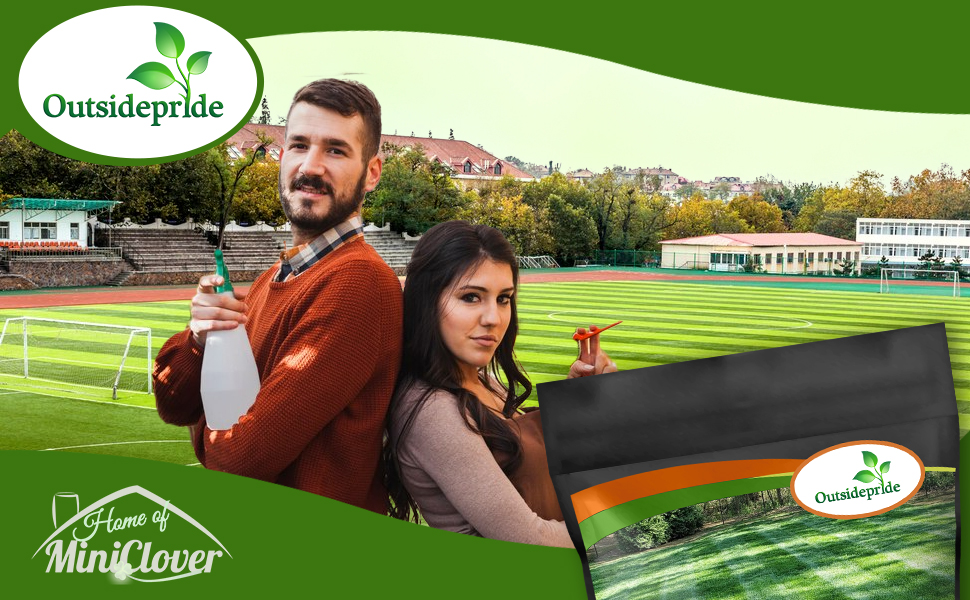
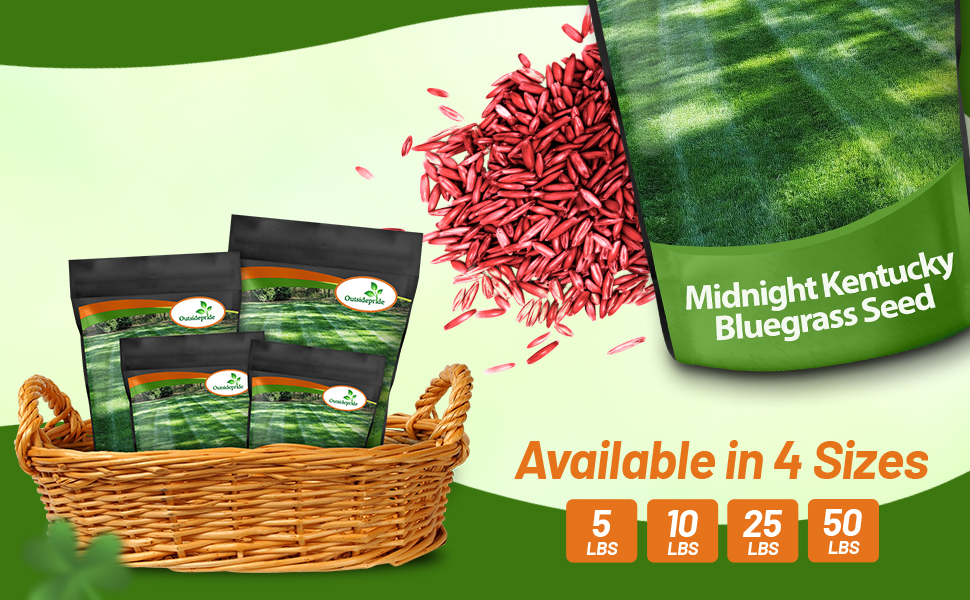
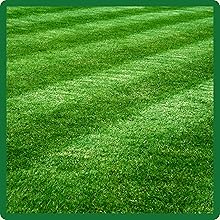
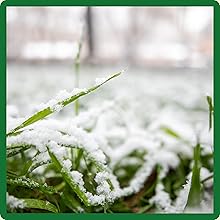
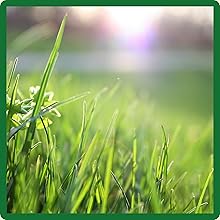
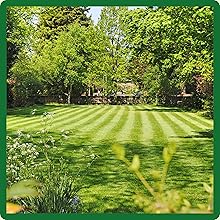
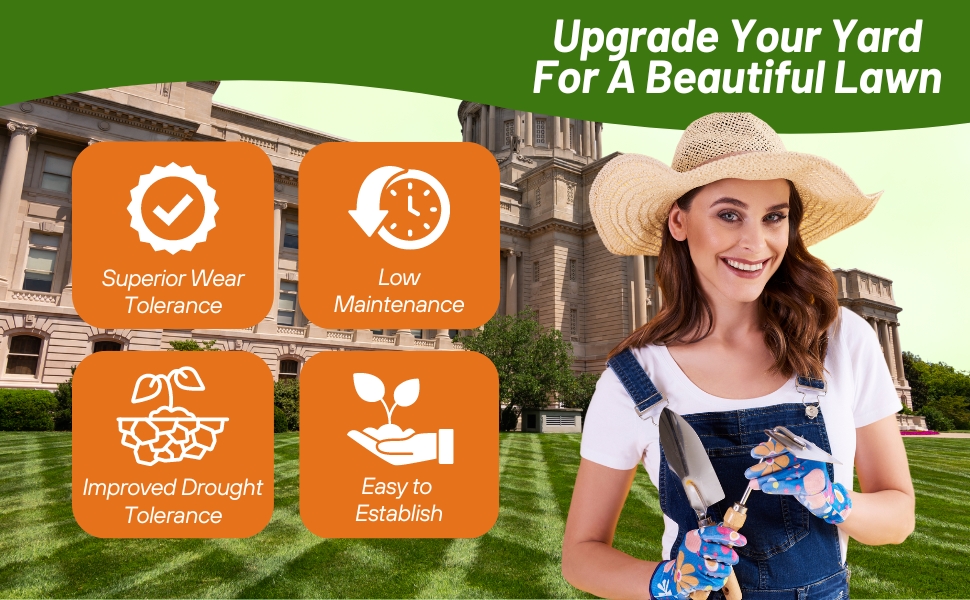
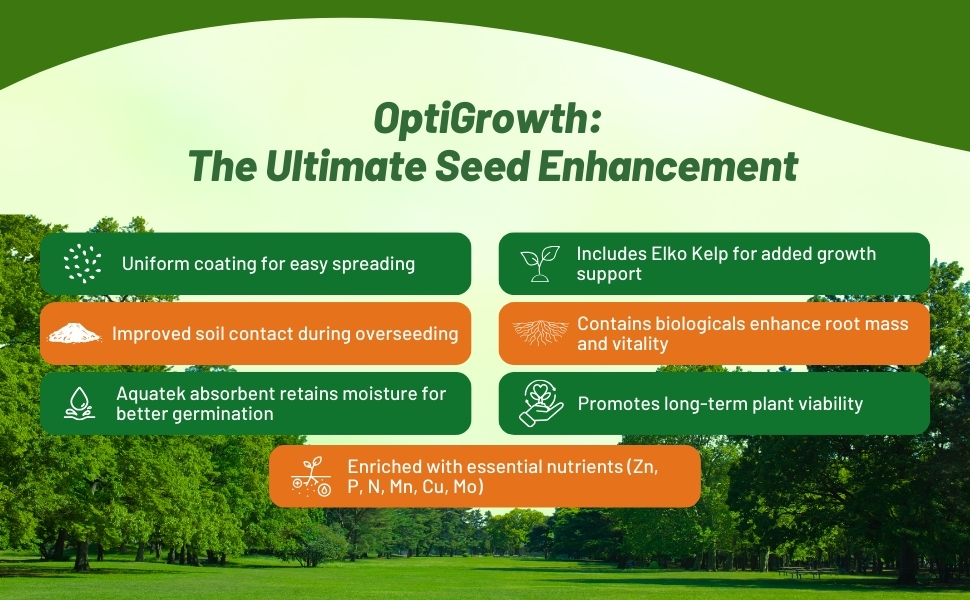
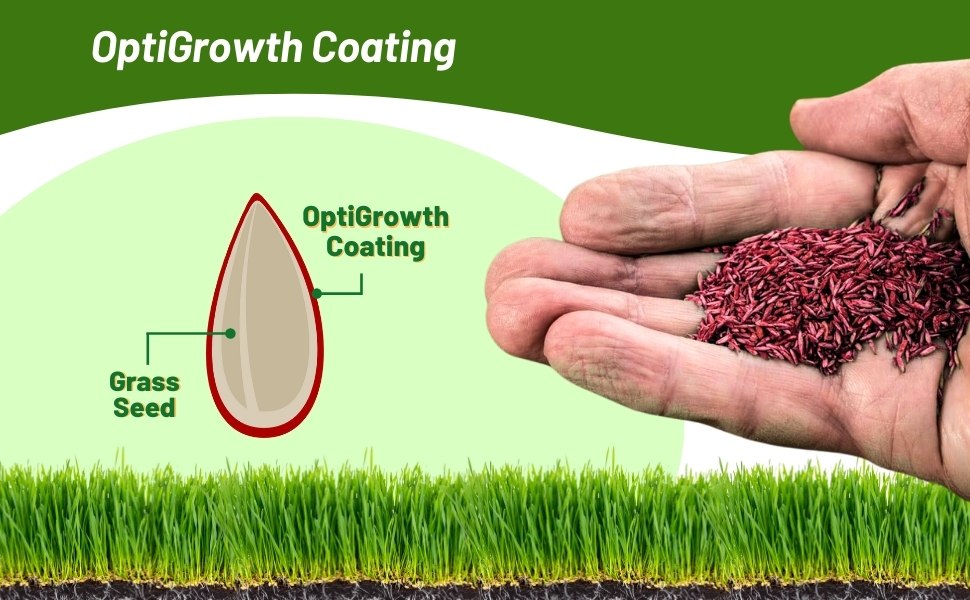
Midnight Kentucky Bluegrass is the most Popular Blue Grass In America. The images above of Midnight Kentucky bluegrass from customers and aroundtheyard.com illustrate how beautiful Midnight Kentucky Bluegrass is. It is a unique compact-type variety grown in the plush Willamette Valley in Oregon to be distributed across the United States. Growing Kentucky Blue grass from seed can truly be an enjoyable and rewarding experience, giving you a Bluegrass lawn that is as durable as it is lovely. Homeowners and professionals alike turn to Midnight Kentucky Bluegrass lawn seed for the excellent turf qualities that it produces.
Why Is Midnight The Most Popular Bluegrass In America?
- A very dark blue-green color
- Dwarf growth habit
- Very high tiller density
- Drought tolerance
- Strong overall disease resistance
- Good tolerance to close mowing
- More than 15 years of proven performance!
Probably the most outstanding feature of Kentucky Bluegrass Midnight is its unusually dark blue-green color giving it a rich color even under low maintenance conditions. A Bluegrass lawn with high tiller density provides a thick carpet that will stand up to the abuses of athletic fields and high traffic. Sod producers and homeowners alike will enjoy Midnight's dwarf growth characteristics which result in fewer mowings and lower maintenance costs. Midnight Kentucky Bluegrass is an outstanding cultivar that shows good resistance to leaf spot and stem rust, stripe smut and dollar spot. University trials have documented Midnight's heat and drought tolerance.
Uses
Midnight Kentucky Bluegrass seed is recommended for use on athletic fields, golf courses, sod blends, parks, professional landscapes, and home lawns areas where Kentucky Bluegrass is adapted. It is compatible in blends with other darker green, lower growing Bluegrasses and in mixtures with strong creeping red fescues and improved “II” and “III” series of turf-type perennial ryegrasses.
Soil, Climate and Fertility Requirements
A Midnight Kentucky Bluegrass lawn will perform in sandy or heavy clay soils. Like all Bluegrasses, it performs best in soils with a pH of 5.5 to 8.0. Three to five lbs. N/1000 sq. ft./year is adequate in most areas of the United states. However, because of Midnight’s dark genetic color, lower fertilizer rates will yield acceptable color. A balanced fertilizer of 3:1:2 ratio of NPK (Nitrogen, Phosphorus, Potassium) with sulphur is recommended in most geographic locations.
Stand Establishment
Midnight, like all Kentucky Bluegrasses, requires about 3 weeks for complete germination. Color may be observed before that time, however, in good growing weather where soil temperatures are above 65 degrees F., expect 3 to 4 weeks for a complete stand of grass. Kentucky Bluegrass turf grass has good mowing qualities and can be maintained at a cutting height of 1/2 to 2 inches.
Seeding Rate & Planting Time
- New turf: Sow 2 - 3 pounds Midnight KBG seed per 1,000 square feet or 80 - 120 lbs per acre
- Over-seeding: Sow 1 - 1 1/2 pounds Midnight Bluegrass seed per 1,000 square feet or 40 - 60 lbs per acre for broadcast over-seeding
- Plant Midnight Kentucky Bluegrass lawn seed when soil temperature reaches 55 degrees in spring up until a minimum of 8 weeks before frost in fall
Planting Guide
SOWING TEMPERATURE
55F+
WHEN TO PLANT
Spring 55F or up to 8 weeks before first frost
AVERAGE GERM TIME
12 - 35 days
DAYS TO FIRST MOWING
28 - 35 days
PLANTING DEPTH
1/8 - 1/4 Inch
SOWING METHOD
Broadcast or Drill
MOWING HEIGHT
2.5 - 3 inches
ENVIRONMENT
Full Sun
ZONES
3 - 9
Grass Specifications
IDEAL FOR
Lawns, Golf Courses
PLANT CHARACTERISTICS
Fine to Medium Bladed, Dark Green
ESTABLISHMENT RATE
Slow
MOISTURE REQUIREMENTS
Moderate to High
ACIDIC SOIL TOLERANCE
Medium
SALINITY TOLERANCE
Moderate
COLD TOLERANCE
High
SHADE TOLERANCE
Poor
WEAR TOLERANCE
Medium to High
THATCH TENDANCY
Medium
FERTILITY NEEDS
Medium
SEASON
Perennial
Supranova Poa supina is the elite shade grass for dense shade in cool season areas. This is the best primo shade lawn grass on market today. It is specially designed for deep shade and little water although it has been used for golf courses, lawns, and athletic field turf for over twenty years. Supranova shade grass has been developed over the last 20 years and the breeding keeps improving.
No other grass seed species outperforms this variety in the shade. It grows where no grass has grown before. It’s wear tolerance and aggressive growth make it ideal high maintenance and high wear areas. Today Supranova shade grass is the most shade tolerant, wear resistant, cool season grass on the market.
Grow Poa supina in colder climates as it is well adapted to cold temperatures and is found commonly in the sub-alpine regions of the German and Austrian Alps. In Germany, the common name is Lägerrispe, which means, "where the cows lay". The name is a reflection of the ability of Poa supina to persist and even thrive on cattle trails, even in shaded woodland areas. Another attractive asset is the apparent resistance of Poa supina to many diseases which results in fewer fungicide applications. Unfortunately, the cost of grass seed for shade is quite high; therefore, the practicality of seeding mono-stands of the grass is often economically unfeasible. Evidence from Germany suggests relatively low rates (e.g., less than 10%) of Poa supina seed can be mixed with other cool season grasses and after several years of heavy traffic the stand will be predominantly Poa supina, providing superior coverage compared to stands without Poa supina.
This is 100% Poa supina grass seed. This is NOT blended with rough bluegrass.
Characteristics
- Germination: This shade grass seed typically germinates in 14 - 21 days.
- Growth habit: Poa supina shade grass has upright growth habit with a slow vertical growth. Spreads by stolons. When left unmowed, height of foliage is 6 inches with seed head height 10 to 12 inches.
- Adaptation: Poa supina Blue grass adapts well to shaded conditions and high traffic areas where soil compaction occurs. Very competitive with other grasses in situations of frequent mowing and traffic. Is favored in wet and moist conditions.
- Mowing: After Poa supina shade grass reaches 2" mow for the first time. After this it may be mowed as low as 3/16 of an inch.
- Disease: Grow Poa supina shade grass for excellent resistance to disease such as snow molds, dollar spot, red threads, and other pathogens.
Seeding Rate & Planting Time
- New turf: Sow 2 - 3 pounds Poa supina seed per 1,000 square feet or 80 - 120 lbs per acre
- Plant Poa supina Bluegrass seed when soil temperature reaches 55 degrees in spring up until a minimum of 12 weeks before frost in fall
Planting Guide
SOWING TEMPERATURE
55F+
WHEN TO PLANT
Spring 55F or up to 8 weeks before first frost
AVERAGE GERM TIME
5 - 28 days
DAYS TO FIRST MOWING
28 - 35 days
PLANTING DEPTH
Surface to 1/8 Inch
SOWING METHOD
Broadcast or Drill
MOWING HEIGHT
3/16 - 2 inches
ENVIRONMENT
Partial Shade - Shade
ZONES
3 - 7
Grass Specifications
IDEAL FOR
Lawns, Golf Courses
PLANT CHARACTERISTICS
Fine to Medium Bladed, Shade Tolerant
ESTABLISHMENT RATE
Slow
MOISTURE REQUIREMENTS
Moderate to Hiigh
ACIDIC SOIL TOLERANCE
Medium
SALINITY TOLERANCE
Moderate
COLD TOLERANCE
High
SHADE TOLERANCE
Good to Excellent
WEAR TOLERANCE
Medium to High
THATCH TENDENCY
Medium
FERTILIZER NEEDS
Low - Medium
HEIGHT
6 inches
SEASON
Perennial
















